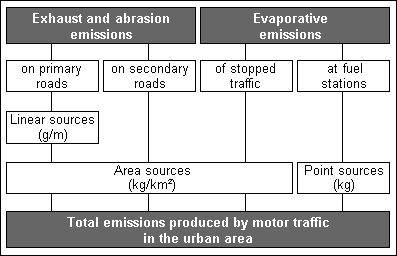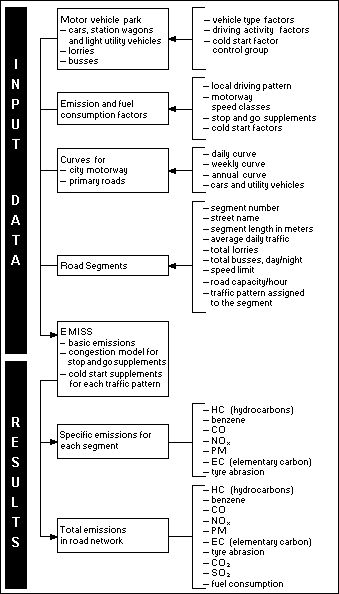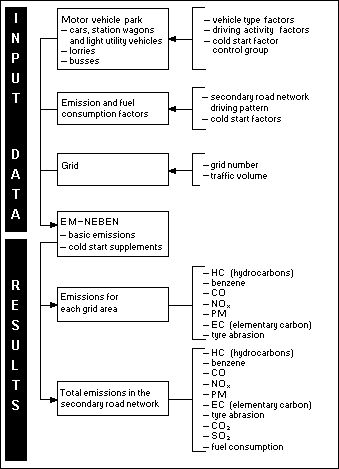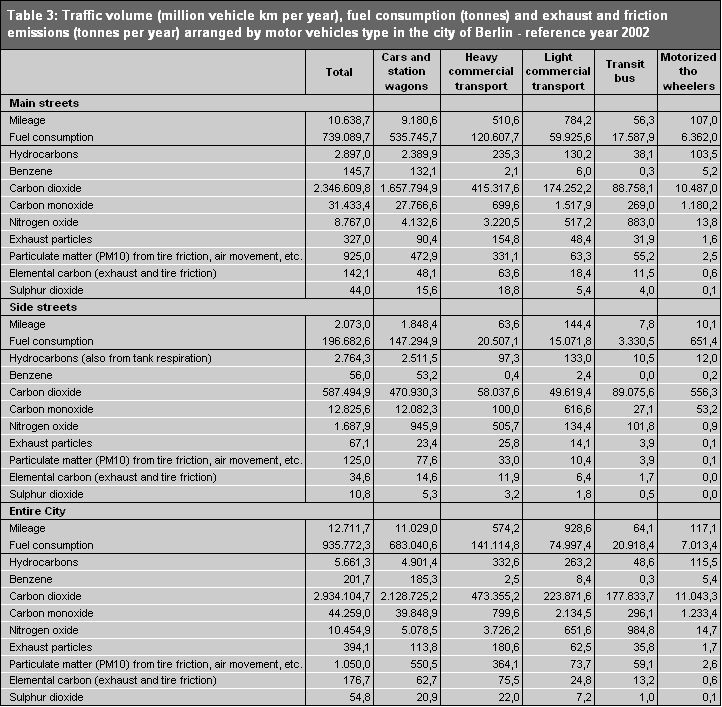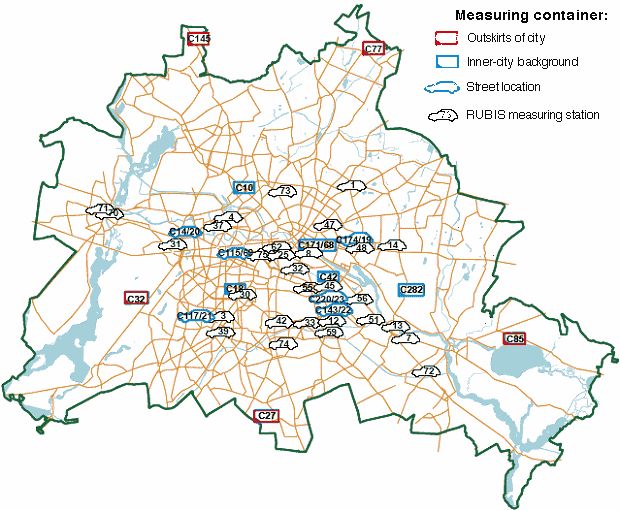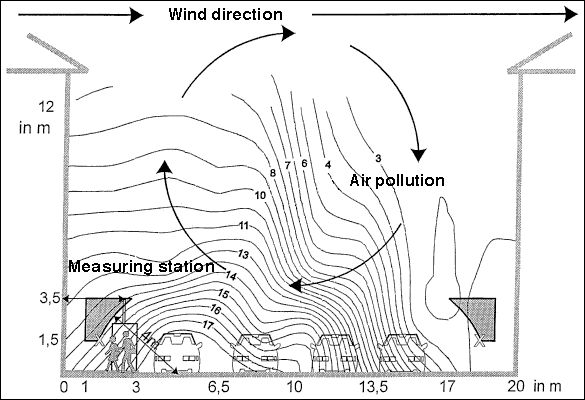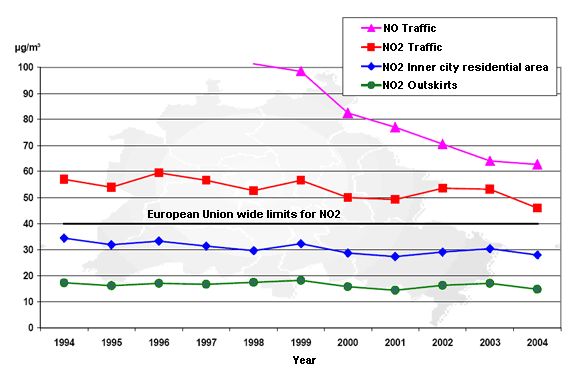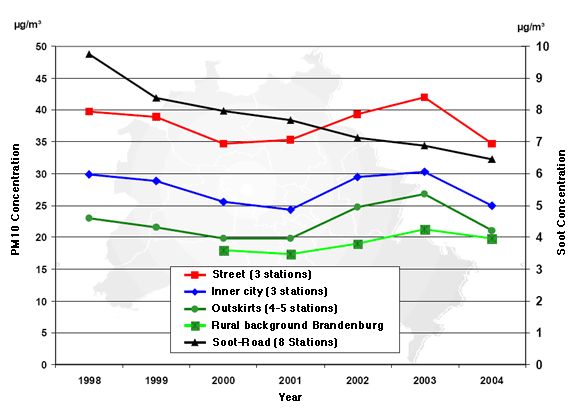Motor Vehicle Traffic Emissions Registry
The Motor Vehicle Traffic Emissions Registry was revived in 2004 because, according to previous experience, this group of polluters is a significant contributor to fine particulate and nitrogen oxide pollution. Traffic counters have been installed in many locations on the main traffic arteries of Berlin since 2001. This data shows the actual traffic patterns in Berlin and is used to design traffic flow. This information is evaluated in the Office of Traffic Management (VMZ) and is used to inform the populace (especially drivers) of traffic conditions and provide routing recommendations to avoid traffic jams through radio broadcasts, the internet, and centrally located sign boards.
Investigation of Traffic Patterns
Since 2002, data from approximately 400 traffic counters at approximately 300 locations on the main street networks of Berlin has been provided by the VMZ. Many of these counters are able to differentiate between passenger cars and trucks. On the basis of this automatically collected data from 2002, exhaust emissions were determined as follows:
processing of counter data from different sources available to the Office of Traffic Management for Berlin for 2002;
integration of available data with a quality weighted summary of all entry data and completion through location related diurnal variation lines;
spatial projection of the location referenced data on the complete arterial street network of Berlin, with results of mid-day traffic counts (DTV) and truck participation;
investigation of those parts of the main arterial street network used by the Berlin Public Transit Authority (BVG) busses according to route data from 2002; and
calculation of emissions with new emission factors from the UBA manual for emission factors, with consideration for the type and function of streets with the help of the IMMISem/air program.
Investigation of Emissions
Exhaust and friction emissions from moving traffic, evaporation emissions from standing traffic, and evaporation emissions from petrol stations contribute to the pollution emissions from motor vehicle traffic. Figure 2 shows an overview of the collection system. Emissions at petrol stations are assigned to “small business”.

